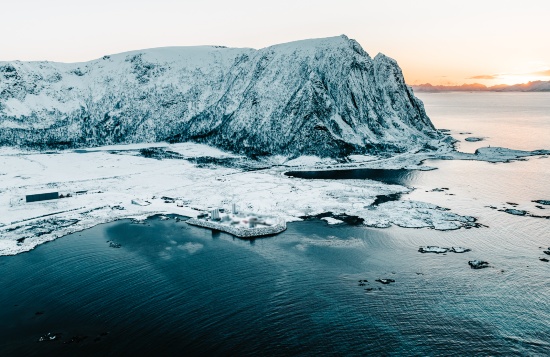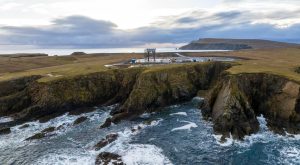
Less than one year after its opening, the spaceport describes it as another important milestone towards the first launch of satellites from Norwegian soil.
Norway is now bidding to become the leading space nation in the Arctic, with the site being located at Nordmela on the Norwegian island of Andøya, pictured above.
Being in the far north on a coastline, the site offers launches to highly retrograde orbit inclinations, favourable for sun synchronous as well as polar orbits, the spaceport highlights. It will be able to support the launch small satellites of up to 1.5 tons.
“There is a huge team effort behind the work to get this license in place,” said Lasse Berg, Interim President, Andøya Spaceport.
“Ever since 2018, our team has been building the foundation that now enables launch of satellites from Norwegian soil. The Collaboration with Isar Aerospace, authorities and stakeholder groups has been key. Building a spaceport from scratch has required patience, creativity and perseverance, and has demanded varied expertise from many different industries.”
As a Launch Site Operator, Andøya Spaceport will have overall responsibility for developing, operating and ensuring safe operations from site. This includes operating the launch site for launch vehicles that place satellites into orbit from Norwegian soil.
Isar Aerospace
It officially opened in November 2023, readying itself to be the future launch site – for small and medium sized satellites – of Isar Aerospace.
The company has a dedicated launch pad at the spaceport and it is Isar Aerospace’s in-house developed launch vehicle Spectrum, that could soon be launched from the location.
Currently, the company says, it is working towards Spectrum’s first test flight. The first and second stage of Spectrum will soon undergo stage testing, a series of hotfire tests which will verify that the systems meet all necessary requirements for flight.
“We congratulate Andøya Spaceport on receiving the Launch site operator license,” said Alexandre Dalloneau, Vice President of Mission and Launch Operations, Isar Aerospace.
“This milestone enables our team at Isar Aerospace to continue with our ambitious plan and soon start with the final stage tests ahead of Spectrum’s first test flight. Together with Andøya Spaceport, our team has created an excellent piece of engineering, the first orbital launch site in continental Europe. We can’t wait for Spectrum to begin operations.”
Opening
At the time it was opened, the spaceport described itself as the “first operational orbital spaceport in continental Europe to finalise the construction of a launch site”.
Note, however, the Swedish Esrange Spaceport also presents itself as an orbital launch site, and has already hosted rocket testbeds, high altitude balloon research and a civilian satellite ground station.
SaxaVord
SaxaVord, in the the Shetland Islands, was officially granted a spaceport licence by the UK Civil Aviation Authority in December 2023.
The site – on the Lamba Ness peninsula site in Unst, on the northerly coast of the islands – became the UK’s first licensed vertical launch spaceport as Spaceport Cornwall was previously licensed for horizontal launches using rockets from a modified Boeing. As such, it was the first licensed spaceport in Europe for vertical launches.
The award follow a range of safety, security, and environmental assessments by the UK’s space regulator, and it permits SaxaVord to host up to 30 launches a year.
RFA
Rocket Factory Augsburg (RFA) – a Bavarian rocket startup – was planning be launching from the Shetland Islands.

But while RFA successfully hot fired its upper stage for a full duration test in the summer of 2023, it has recently hit problems.
In August it conducted a full nine-engine test of its first stage on the launch stool at SaxaVord Spaceport, with an anomaly resulting in a fire at the site. Aside from the damage, the German company is now investigating the causes, setting back previous launch plans.
An initial launch was originally planned for the end of 2023.
See also: NATO Innovation Fund backs Isar Aerospace in extended Series C







